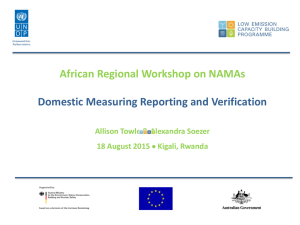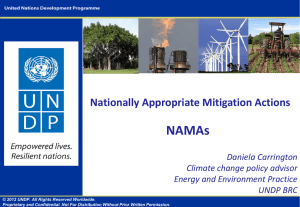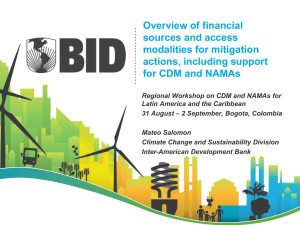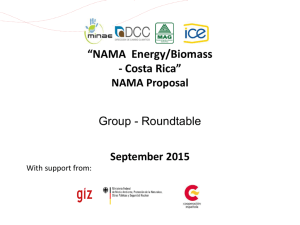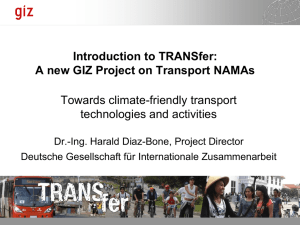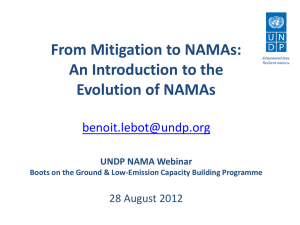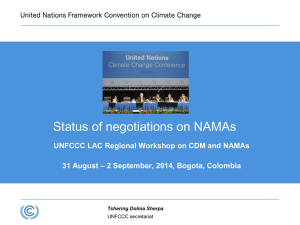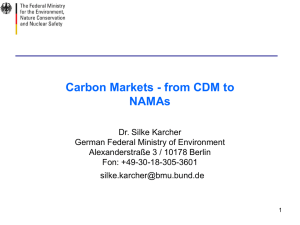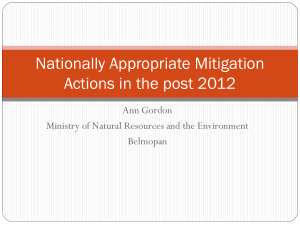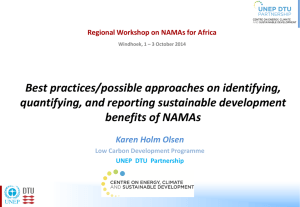Supporting NAMAs in practice:
advertisement
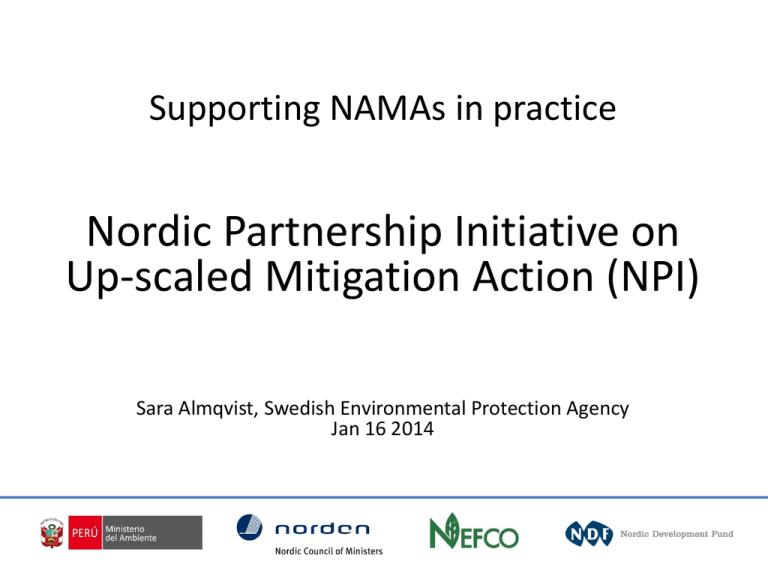
Supporting NAMAs in practice Nordic Partnership Initiative on Up-scaled Mitigation Action (NPI) Sara Almqvist, Swedish Environmental Protection Agency Jan 16 2014 Outline • About NPI – a readiness initiative • Key findings so far • Challenges and opportunities for NAMAs in a broader context Nordic Partnership Initiative on Up-scaled Mitigation Action We aim at: • Building capacity in the host countries to enable them to structure and implement ”Nationally Appropriate Mitigation Actions” (NAMAs) • Exploring ways to attract national and international climate finance, i.a. from a new market based mechanism and/or results based finance. • Providing input of lessons learnt to the international climate negotiations • Encourage other Parties to take similar actions Nordic Council of Ministers: Direction and support Funds and mandate Nordic Environment Finance Corporation (NEFCO) Funds, Guidance Pilot programme in waste management sector Funds and mandate Nordic working group for global climate negotiations (NOAK) National funds, Guidance by NOAK Guidance by NOAK, NEFCO Funds and mandate Nordic Development Fund (NDF) and ADB (as partner agency): Funds, Guidance Pilot programme in cement sector In-kind contribution, Guidance Partner country (Peru) Partner country (Vietnam) The programmes in Peru and Vietnam • One NAMA within the solid waste sector/cement sector ready to be financed and implemented • This requires: - Access to adequate data - Identification of mitigation options - Identification of technical, institutional and other barriers for mitigation actions and how to overcome the barriers - System for Measurement Reporting and Verification(MRV) - Capacity building, institutional, technical, financial, MRV etc. Activities in Peru – Solid Waste Sector I: Solid waste inventory Data gathering of waste and waste streams Calculation of GHG emissions from waste sector (Tier 3, 2006 IPCC Guidelines) Establishment of MRV system Capacity building II: National solid waste strategy Identification of possible mitigation options, barriers and how to overcome those barriers BAU calculation and identification of targets Formulation of a national solid waste strategy Capacity building III: NAMA Development Design of a NAMA based on and integrated in the national solid waste strategy MRV Identification/screening of national and international financing options Reference levels for crediting and trading, benchmarks for co-benefits Capacity building Throughout the project: Consultation with stakeholders Coordination with other donors and initiatives Dissemination of lessons learnt Time Table Feb – June 2011: Feasibility study Dec 2011: Launch of pilot project at COP 17 Peru Sept 2012: MoU signed Nov 2012 - May 2013: Procurement of consultants June 2013 - June 2015: Implementation of programme Vietnam Nov 2012: Approval from Vietnam Jan-Dec 2013: Procurement of consultants Jan 2014 – Jan 2016: Implementation of programme Key findings in Peru so far Many on-going activities and investments to take place in a near future that will create the infrastructure for the next coming 1020 years. The majority of the projects lack climate mitigation measures. Currently little or no thinking of regional cooperation. No specific national framework for MRV Key findings in Peru so far, continued Lack of capacity in central governement constrain for implementation Very slim group of government officials in Peru Need for cooperation with and capacity building in other ministries than the Ministry of Environment Opportunities and Challenges for NAMAs A national or regional strategy based on a sector wide survey can really make a difference. Implementation of NAMAs will require not only international funds but also human resources in the developing countries. Funding of NAMA readiness activities important for transitional change – The Green Climate Fund likely to play an important role Capacity building on NAMAs needed - also in developed countries Thanks! sara.almqvist@naturvardsverket.se
